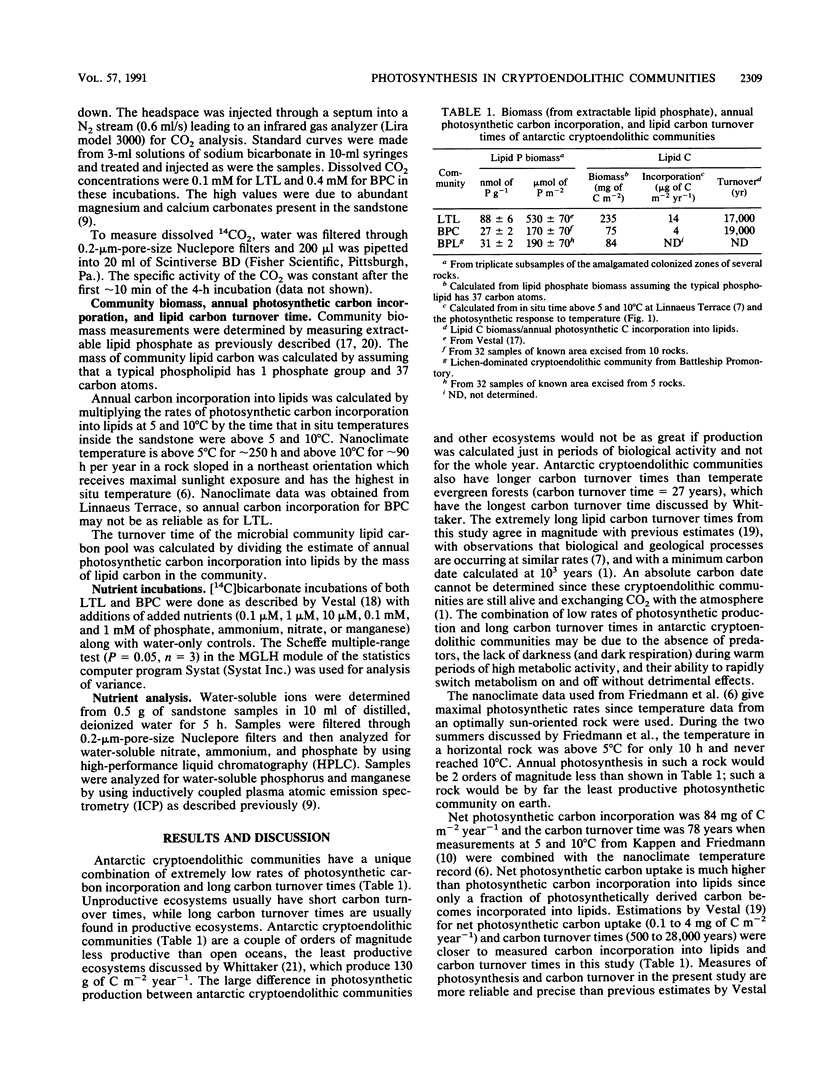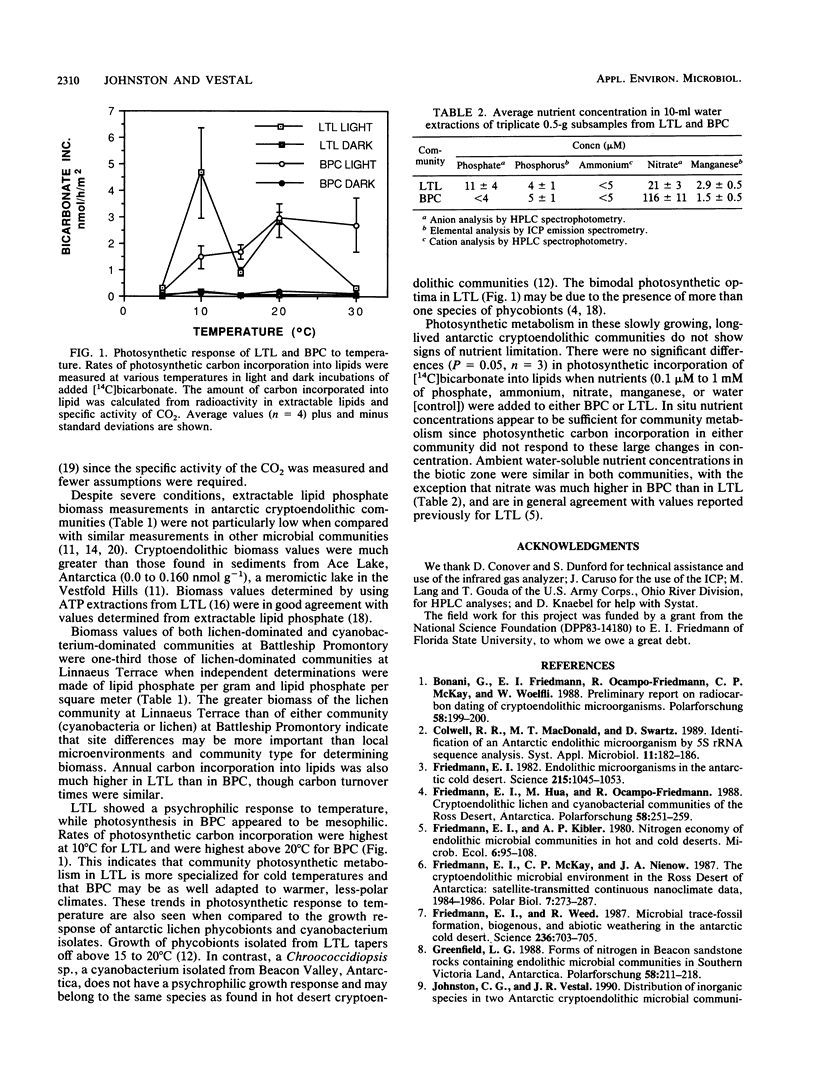Abstract
The main forms of terrestrial life in the cold, desolate Ross Desert of Antarctica are lichen-dominated or cyanobacterium-dominated cryptoendolithic (hidden in rock) microbial communities. Though microbial community biomass (as measured by extractable lipid phosphate) was well within the range of values determined for other microbial communities, community lipid carbon turnover times (calculated from community lipid biomass, rates of community photosynthetic carbon incorporation into lipids versus temperature, and the in situ temperature record) were among the longest on Earth (ca. 20,000 years). When the temperature is above freezing and moisture is present, moderate rates of photosynthesis can be measured. Lichen communities had a psychrophilic temperature response (maximal rate of 4.5 ng of C h-1 m-2 at 10°C) while cyanobacteria communities had maximal rates at 20 to 30°C (3 ng of C h-1 m-2). These extraordinarily slowly growing communities were not nutrient limited. No significant changes in photosynthetic metabolism were observed upon additions of 100 nM to 1 mM nitrate, ammonium, phosphate, and manganese. These simple, tenacious microbial communities demonstrate strategies of survival under conditions normally considered too extreme for life.
Full text
PDF



Selected References
These references are in PubMed. This may not be the complete list of references from this article.
- Bonani G., Friedmann E. I., Ocampo-Friedmann R., McKay C. P., Woelfli W. Preliminary report on radiocarbon dating of cryptoendolithic microorganisms. Polarforschung. 1988;58(2-3):199–200. [PubMed] [Google Scholar]
- Friedmann E. I. Endolithic microorganisms in the antarctic cold desert. Science. 1982 Feb 26;215(4536):1045–1053. doi: 10.1126/science.215.4536.1045. [DOI] [PubMed] [Google Scholar]
- Friedmann E. I., Hua M., Ocampo-Friedmann R. Cryptoendolithic lichen and cyanobacterial communities of the Ross Desert, Antarctica. Polarforschung. 1988;58(2-3):251–259. [PubMed] [Google Scholar]
- Friedmann E. I., McKay C. P., Nienow J. A. The cryptoendolithic microbial environment in the Ross Desert of Antarctica: satellite-transmitted continuous nanoclimate data, 1984 to 1986. Polar Biol. 1987;7:273–287. doi: 10.1007/BF00443945. [DOI] [PubMed] [Google Scholar]
- Friedmann E. I., Weed R. Microbial trace-fossil formation, biogenous, and abiotic weathering in the Antarctic cold desert. Science. 1987 May 8;236(4802):703–705. doi: 10.1126/science.11536571. [DOI] [PubMed] [Google Scholar]
- Johnston C. G., Vestal J. R. Distribution of inorganic species in two Antarctic cryptoendolithic microbial communities. Geomicrobiol J. 1989;7:137–153. doi: 10.1080/01490458909377858. [DOI] [PubMed] [Google Scholar]
- Palmer R. J., Jr, Friedmann E. I. Water relations and photosynthesis in the cryptoendolithic microbial habitat of hot and cold deserts. Microb Ecol. 1990;19:111–118. [PubMed] [Google Scholar]
- Tschermak-Woess E., Friedmann E. I. Hemichloris antarctica, gen. et sp. nov. (Chlorococcales, Chlorophyta), a cryptoendolithic alga from Antarctica. Phycologia. 1984;23(4):443–454. doi: 10.2216/i0031-8884-23-4-443.1. [DOI] [PubMed] [Google Scholar]
- Vestal J. R. Biomass of the cryptoendolithic microbiota from the Antarctic desert. Appl Environ Microbiol. 1988 Apr;54(4):957–959. doi: 10.1128/aem.54.4.957-959.1988. [DOI] [PMC free article] [PubMed] [Google Scholar]
- Vestal J. R. Carbon metabolism of the cryptoendolithic microbiota from the Antarctic desert. Appl Environ Microbiol. 1988 Apr;54(4):960–965. doi: 10.1128/aem.54.4.960-965.1988. [DOI] [PMC free article] [PubMed] [Google Scholar]
- Vestal J. R. Primary production of the cryptoendolithic microbiota from the Antarctic Desert. Polarforschung. 1988;58(2-3):193–198. [PubMed] [Google Scholar]


